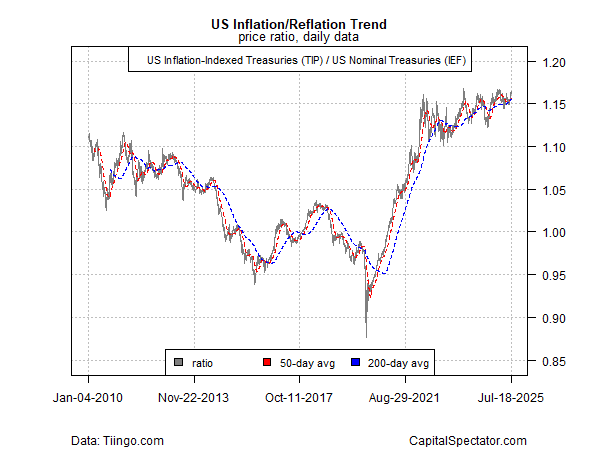Janux stock plunges after hours following mCRPC trial data
The August 1 tariffs deadline that will raise prices for US imports is approaching, but market sentiment remains unaffected, based on set of proxy ETFs through Friday’s close (July 18). Following the April tariff tantrum, when markets tanked, prices have rebounded, and the risk-on posture looks no worse for wear with less than two weeks to go for implementing new US tariffs.
One view is that higher US tariffs will have minimal impact on the economy and financial markets. Maybe, although many analysts disagree, although market sentiment appears to be assuming that higher tariffs will have minimal effect on the bull run.
Some observers see US plans to raise tariffs on Aug. 1 as a negotiating tactic, and therefore subject to change, but US Commerce Secretary Howard Lutnick downplayed the idea over the weekend. Speaking on Sunday, he said: “That’s a hard deadline, so on August 1, the new tariff rates will come in. Nothing stops countries from talking to us after August 1, but they’re going to start paying the tariffs on August 1.”
If this represents a risk for markets, it’s not showing up in an ETF-based proxy for global asset allocation, based on the ratio for an aggressive (AOA) strategy vs. its conservative counterpart (AOK). On Friday, this benchmark closed just below a record high set earlier in the week.
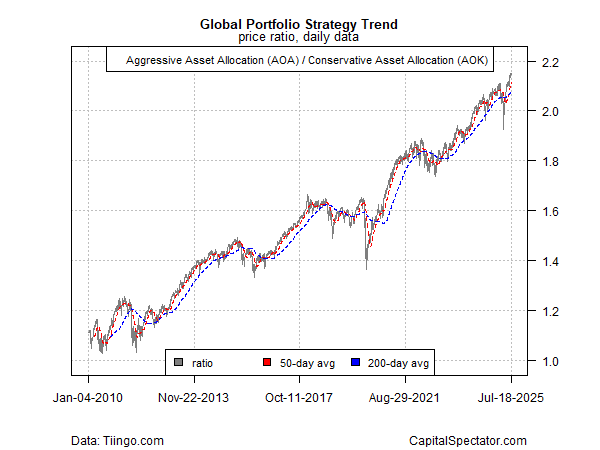
US equity market sentiment has been slower to recover from the April correction. Still, the rebound reached a “Mission Accomplished” milestone last week when the ratio for the US stock market (SPY) vs. a low-volatility (USMV) counterpart closed at a record high.
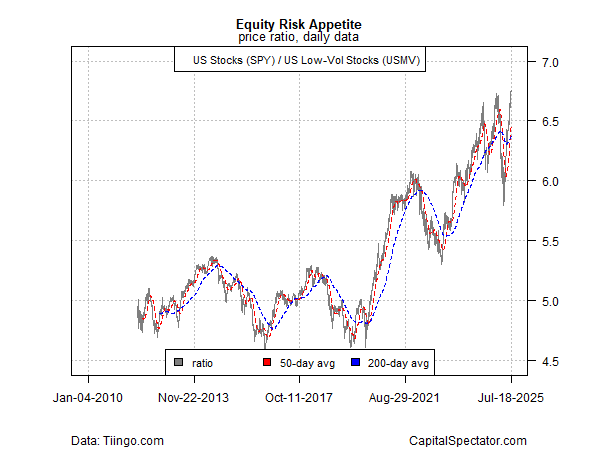
One thing that hasn’t changed is the relative weakness in US shares (VTI) vs. foreign equities in developed markets (VEA). Although US stocks have started to regain strength vs. offshore shares, there’s still a long way to go to recover the American exceptionalism that prevailed before 2025.
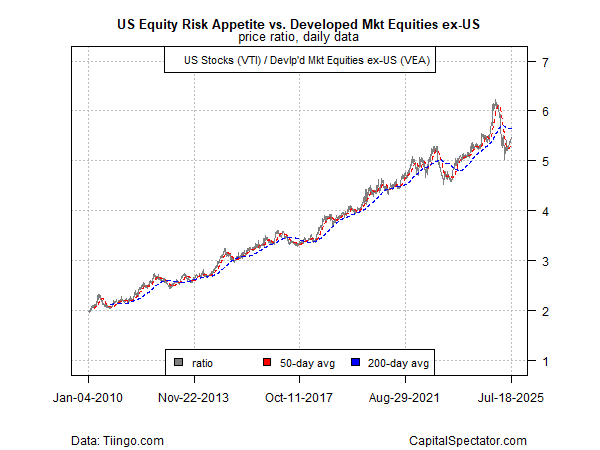
A similar profile applies to US stocks (VTI) vs. equities in emerging markets (VWO).
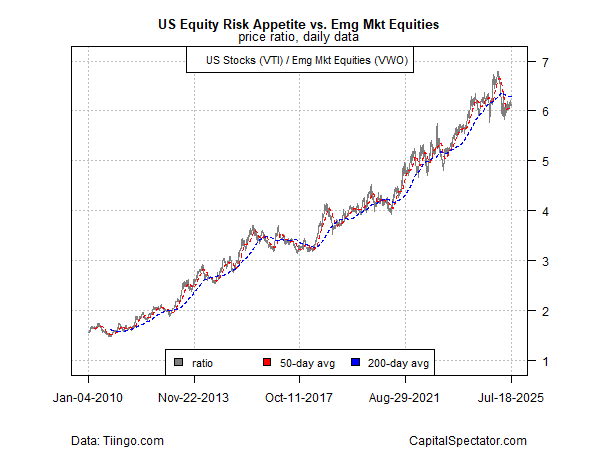
Meanwhile, the relative weakness in US small caps (IJR) versus their large-cap brethren (SPY) persists.
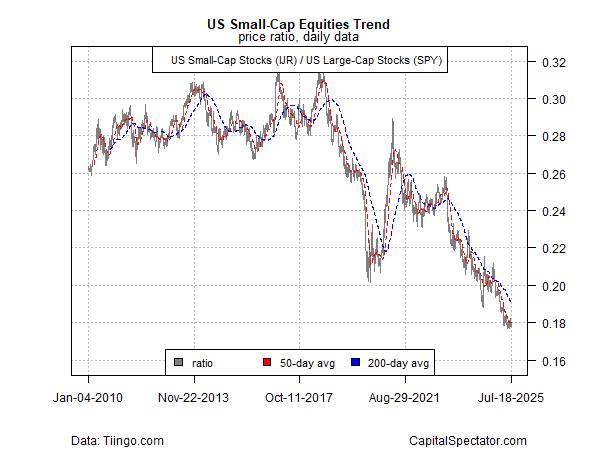
One notable change of late in sentiment is the revival in the inflation trade, based on relative strength for inflation-indexed US Treasuries (TIP) vs. conventional US government bonds (IEF). The firmer upside trend in TIPS vs. their nominal counterparts has been modest, and unfolding in fits and starts, but the trend bias is hard to miss and suggests that the reflation trade has room to run.
The prospect of higher tariffs, and the expectation that tariff-related inflation will eventually arrive, is one area where markets are rethinking expectations for post-Aug. 1 economic world order.